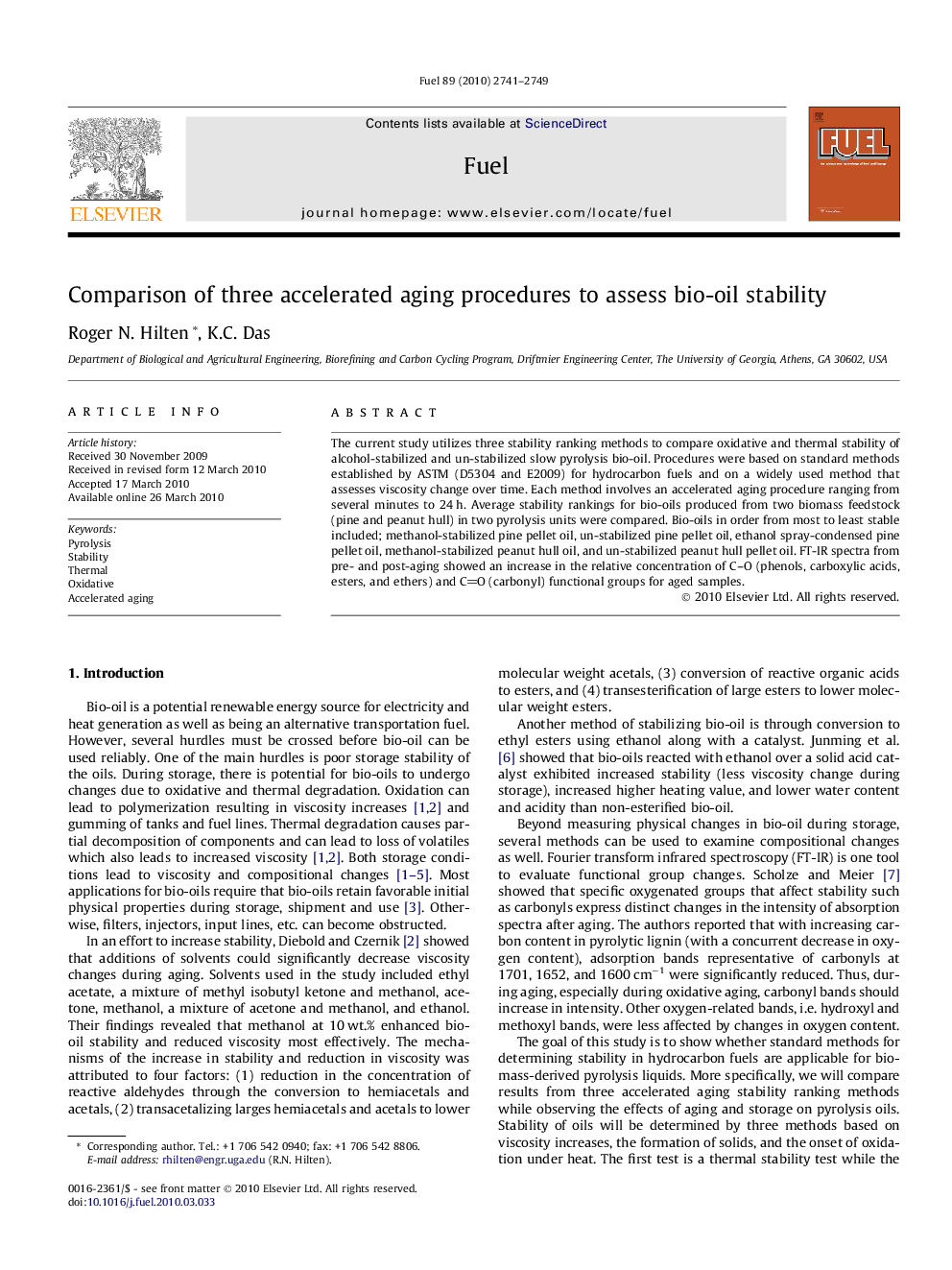| Article ID | Journal | Published Year | Pages | File Type |
|---|---|---|---|---|
| 206537 | Fuel | 2010 | 9 Pages |
The current study utilizes three stability ranking methods to compare oxidative and thermal stability of alcohol-stabilized and un-stabilized slow pyrolysis bio-oil. Procedures were based on standard methods established by ASTM (D5304 and E2009) for hydrocarbon fuels and on a widely used method that assesses viscosity change over time. Each method involves an accelerated aging procedure ranging from several minutes to 24 h. Average stability rankings for bio-oils produced from two biomass feedstock (pine and peanut hull) in two pyrolysis units were compared. Bio-oils in order from most to least stable included; methanol-stabilized pine pellet oil, un-stabilized pine pellet oil, ethanol spray-condensed pine pellet oil, methanol-stabilized peanut hull oil, and un-stabilized peanut hull pellet oil. FT-IR spectra from pre- and post-aging showed an increase in the relative concentration of C–O (phenols, carboxylic acids, esters, and ethers) and CO (carbonyl) functional groups for aged samples.
